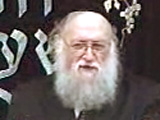Beit Midrash
- Sections
- Chemdat Yamim
- Bemare Habazak - Rabbis Questions
- Shabbat and Holidays
- Laws of Shabbat
- The Melachot
Answer: The concept that you to refer, known as davar gush, has two major areas of impact. 1) When something is hot and is found in the utensil in which it was heated (kli rishon) it can cause transfer of taste from it to another food or utensil. This is less likely if it has been transferred to another utensil (kli sheni) (see opinions in Shulchan Aruch, Yoreh Deah 105:2). If the hot food is a davar gush, then according to the Maharshal, cited in and accepted by the Shach (Yoreh Deah 105:8), we assume that it retains enough heat to be considered food in a kli rishon. The Rama (YD 94:7) disagrees. 2) Cooking on Shabbat takes place in a kli rishon, but not in a kli sheni (Shabbat 40b). But if the hot, kli sheni food is a davar gush, some say it is able to cook food put on top of it like a kli rishon does. The Mishna Berura (318:118) concludes that we treat the matter as a doubt. Some poskim (including Issur V’heter 36:7) posit that a davar gush is only able to transfer taste but not to cook. Your question can apply to either area of Halacha, which also makes it possible to look for sources from either
The K’tav Sofer (Chulin 104b) comments on the gemara’s search for a case in which one might come to cook meat and milk together at the table considering that one does not usually bring food in kli rishon utensils there. He wonders why the case is not when milk is in contact with a hot chunk of meat. He answers that if the meat is dry, there is no Torah prohibition of basar b’chalav with tzli (dry heat). If there is liquid, then the stringent status of davar gush would not apply for the following reason. Tosafot (Shabbat 40b) says that the reason kli sheni does not cook is that its cold walls lower the heat. Therefore, says the Issur V’heter (ibid.), since davar gush does not cling to the kli’s walls, it does not become a kli sheni. Therefore, says the K’tav Sofer (the Minchat Solet 23:7 agrees), the liquid in a pot with a davar gush would be impacted by the walls and then impact the food. Therefore, the K’tav Sofer would clearly treat the soup in question as a kli sheni.
On the other hand, the Yad Yehuda (105:14) argues that the somewhat hot broth keeps the davar gush hotter than if it is sitting alone in cool air. He therefore says that according to the Maharshal’s camp, a davar gush in liquid in a kli sheni halachically remains a davar gush. Ostensibly then he would treat your soup as a davar gush. However, we will illustrate, with the help of a well-known halacha that the general assumption is not this way.
There is a machloket whether it is permitted to put bread into hot soup on Shabbat, as it is possible that cooking significantly changes the previously baked bread (see Shulchan Aruch/Rama, Orach Chayim 318:5). The Mishna Berura (ad loc. 45) permits putting bread in soup that went into a ladle and then into a bowl (in which case it might be a kli shlishi – see Mishna Berura 318:87). This compromise ruling is cited and accepted by many poskim (see Shemirat Shabbat K’hilchata 1:59; Orchot Shabbat 1:42). The Mishna Berura (whose language is unclear) and those who adopt his ruling do not warn us that this is not permitted if there are vegetables in the soup out of concern that davar gush prevents the soup from being considered a kli shlishi.
This can be due to the K’tav Sofer. However, the consensus on this point may be due to the following thesis. The impact that a "complex" warm food has is measured by its "average qualitative heat" rather than the highest level of any of its components. In summary, a kli sheni has lower level heat than a kli rishon and while some say a davar gush is an exception, that exception is applied only when the davar gush interacts with another food by itself (Orchot Shabbat 1:142 leans in this direction).

Bemare Habazak - Rabbis Questions (627)
Rabbi Daniel Mann
389 - Difficulty in Returning Stolen Funds
390 - Definition of Davar Gush
391 - Frozen Challa for Lechem Mishneh
Load More

Ask the Rabbi: Rubbing Cream on Someone who Accepted Shabbat
Rabbi Daniel Mann | Cheshvan 5786

Ask the Rabbi: Drawer with Aluminum Foil Roll
Rabbi Daniel Mann | Cheshvan 5786

Ask the Rabbi: Timing of Ma’aser Kesafim
Rabbi Daniel Mann | Sivan 5785




















